Jean Nouvel’s ‘desert rose’ design for the National Museum of Qatar completes
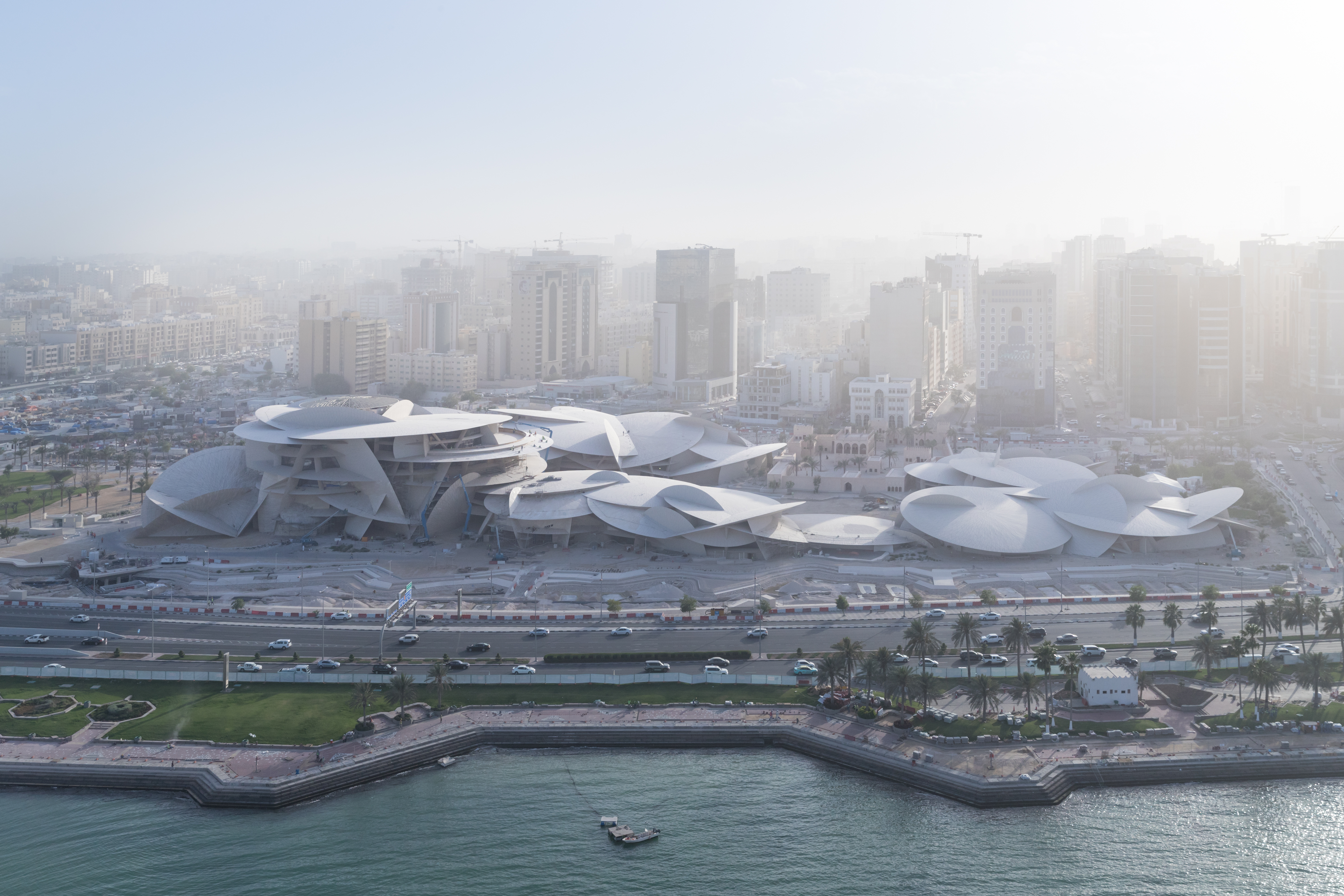
At the heart of the new National Museum of Qatar is a platform displaying the components of a traditional bait al-sha’t, or ‘house of hair’, the tents Bedouins constructed and dismantled as they roamed the peninsula. Resembling long Persian rugs, they were knit by women from the hair of black goats for their ability to protect from harsh, unpredictable weather.
The message, that architecture here in Qatar must work hard, is as true today as ever. Like the skyscrapers of Doha’s West Bay area, Jean Nouvel’s latest feat, a blast of interlocking concrete discs, is tasked with ‘bridging the sea and desert’ (or, as it were, the city and motorway). But it also must project and shape the nation’s cultural identity, draw publicity to a tiny country growing in geopolitical heft, and help develop a new cultural industry to mitigate the dominance of oil.
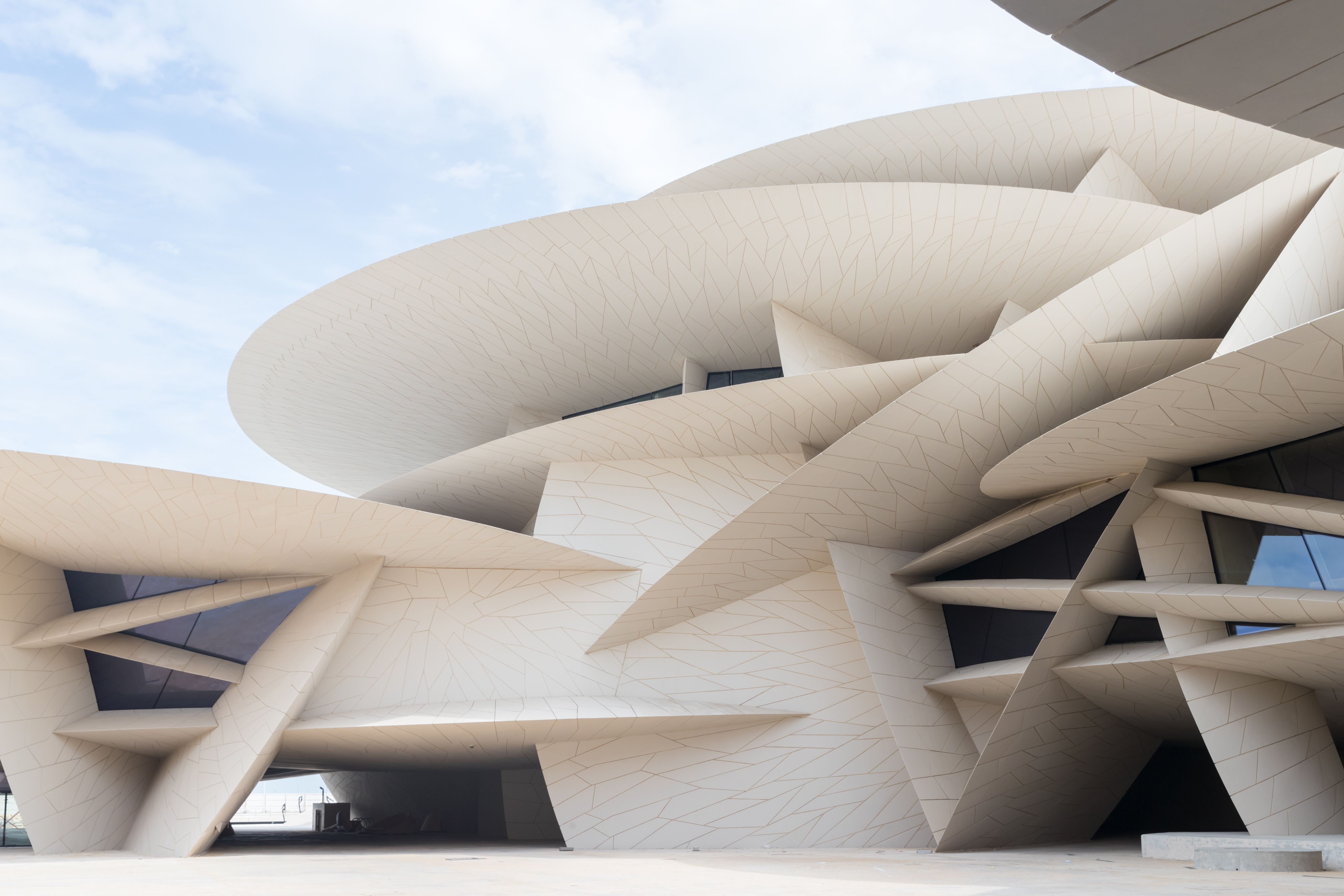
The structure is a blast of interlocking concrete discs.
Nouvel’s design nails a tough mission: to balance, superlative for superlative, IM Pei’s pyramidal Museum of Islamic Art, down the road. Not to mention Nouvel’s own Louvre satellite next door in Abu Dhabi. The architect takes as his inspiration a naturally occurring phenomenon of the ‘desert rose’, a layered crystallisation of minerals occurring in salty sand. He designed 539 conical discs to act as ‘petals’ and cast them in glass fibre-reinforced concrete. The neutral-toned finish will provide a foil for the scourge of flying sand that ends up coating even Doha’s steeliest towers after a storm. ‘They symbolise at once the eternity of the desert and its link with the sea,’ he says.
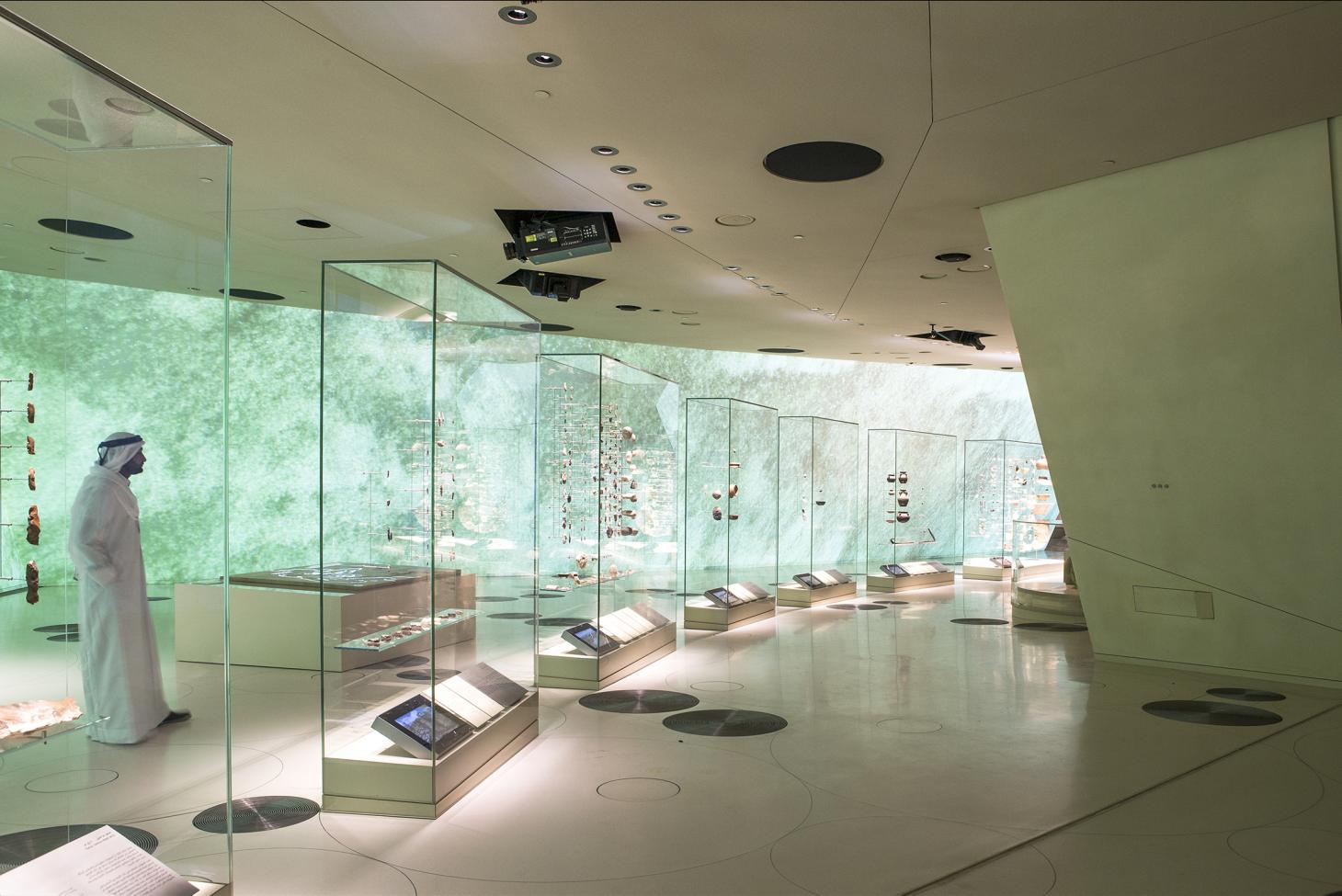
Inside, the museum hosts displays that celebrate the nation’s identity.
Driving Doha’s palm-edged Corniche is how most visitors will approach the NMoQ – the building creeps up on you that way. But taking the narrower inland roads allows it to properly surge into view. The nimbleness and litheness of the forms belie the heavy brutality of the material, which is supported by deftly placed vertical volumes that form a steel superstructure, anchored into the grainy public plaza.
At the entrance, petals fly outward into archways, and as you pass under, the arrangement appears to blossom before your eyes. The complexity, says Nouvel, is in the connections at each node. Arup engineers in every timezone worked to control the forces at those intersections. ‘The structural system is a mystery,’ concludes Nouvel.
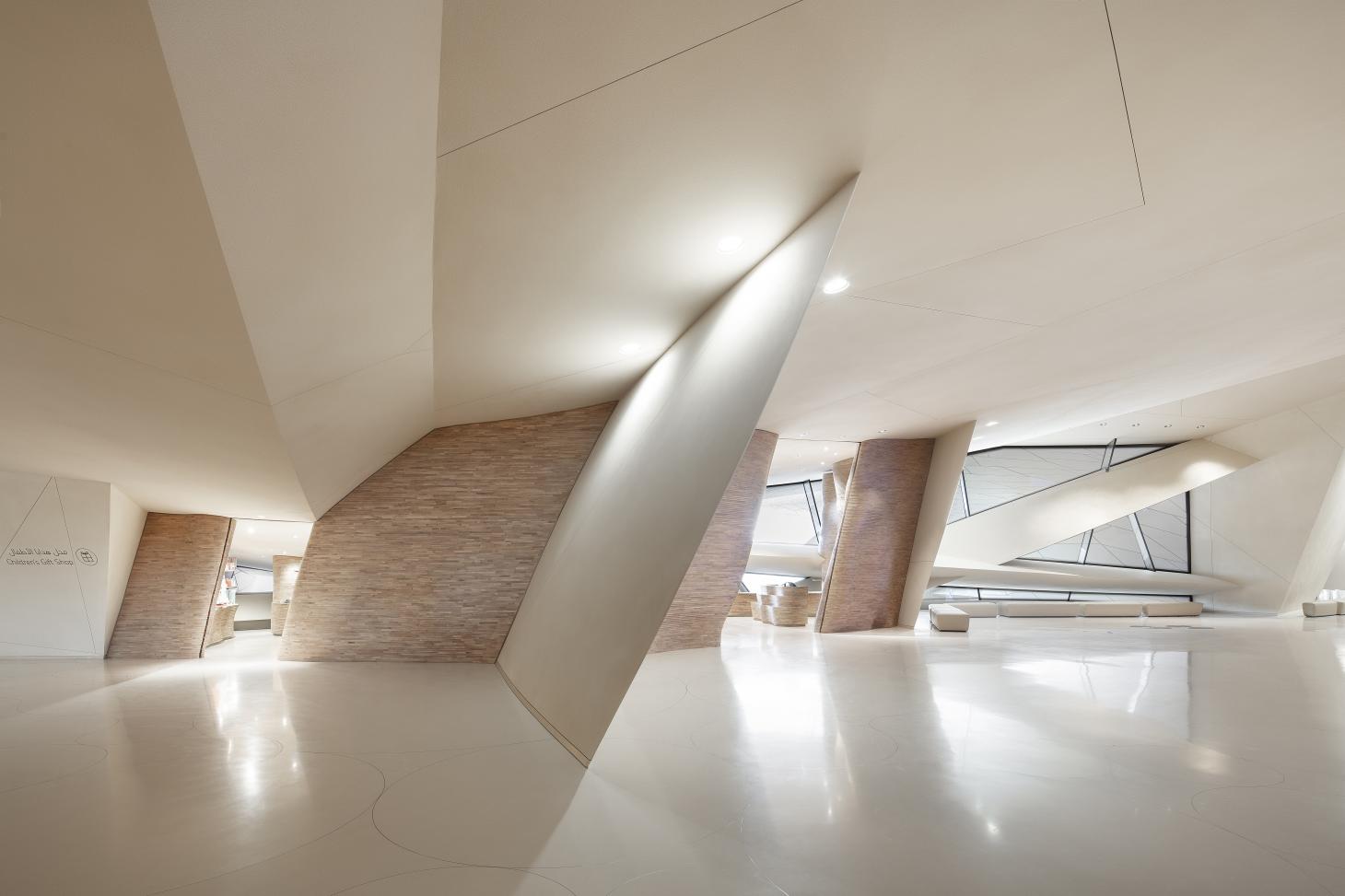
Entrance to the Children’s gift shop, with layered interior architecture by Koichi Takada Architects.
Indoors, the first curiosity you’ll encounter is an escalator, leading up to a second lobby and corridor. Windows, set deep within the voids to minimise harsh light and heat, work with inward-slanting walls to suppress the visitor experience slightly. The wonky walls deliver an effect not unlike walking through a series of Bedouin tents; instead of bearing the brunt of the artefacts, they bear giant, high-definition screens broadcasting historical video reenactments by seasoned directors like Mira Nair and Peter Webber.
Moving into the centre of each gallery are the actual artefacts: tools and runes from prehistory, falconry gear and pearl-fishing equipment from the early years of this 200-year-old nation and finally extraction machinery from Qatar’s recent arrival as a world leader in liquid natural gas. They go on nearly a mile, culminating at the largest artefact of all: a century-old palace once inhabited by the late Sheikh Abdullah bin Jassim Al Thani, now under restoration.
Receive our daily digest of inspiration, escapism and design stories from around the world direct to your inbox.
Nouvel says ‘architecture is the testimony of an epoch,’ and he believes his building and this collection ‘will help develop better understanding and communication between civilizations and political entities.
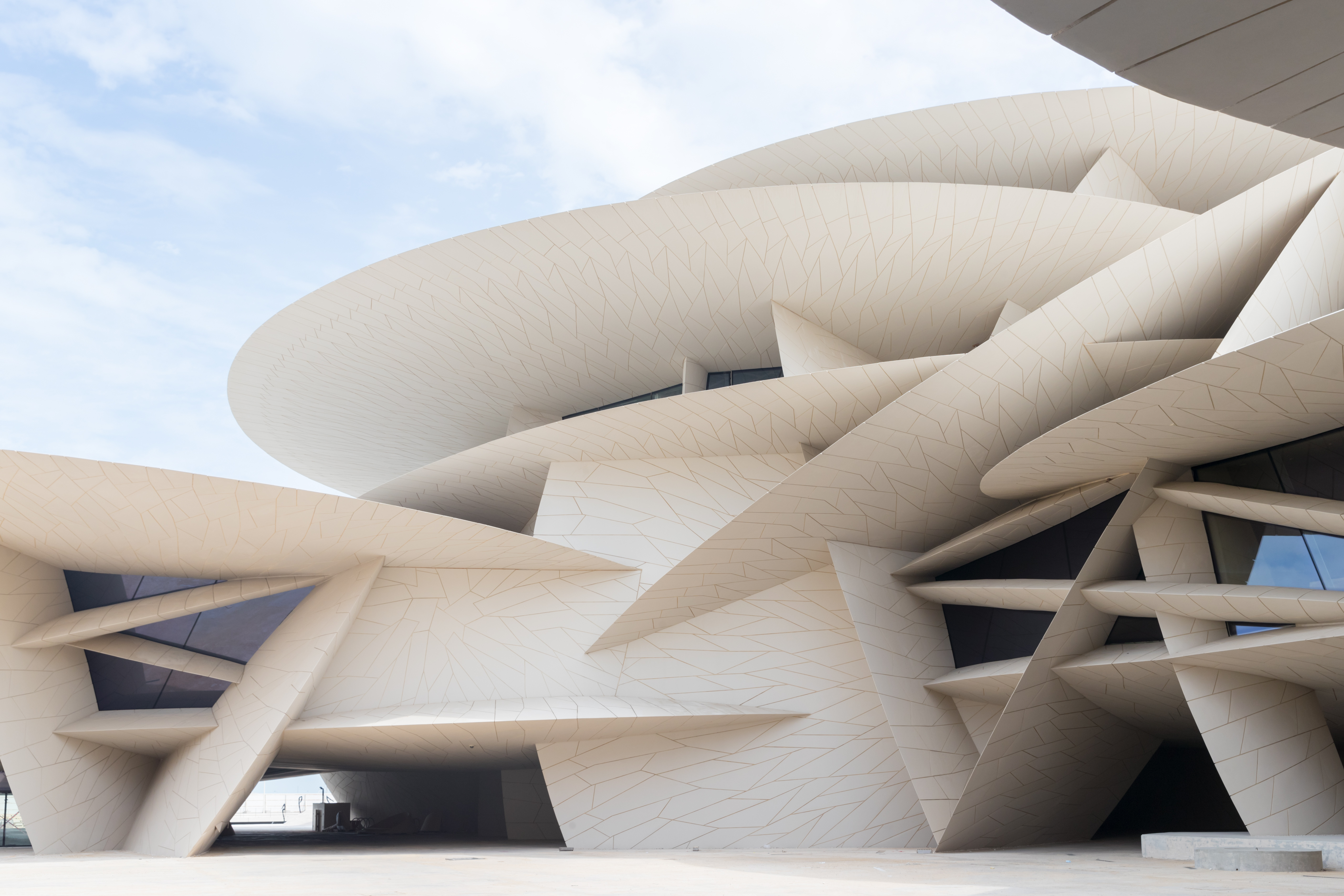
The shape of the museum is inspired by the naturally occurring phenomenon of the ‘desert rose’.
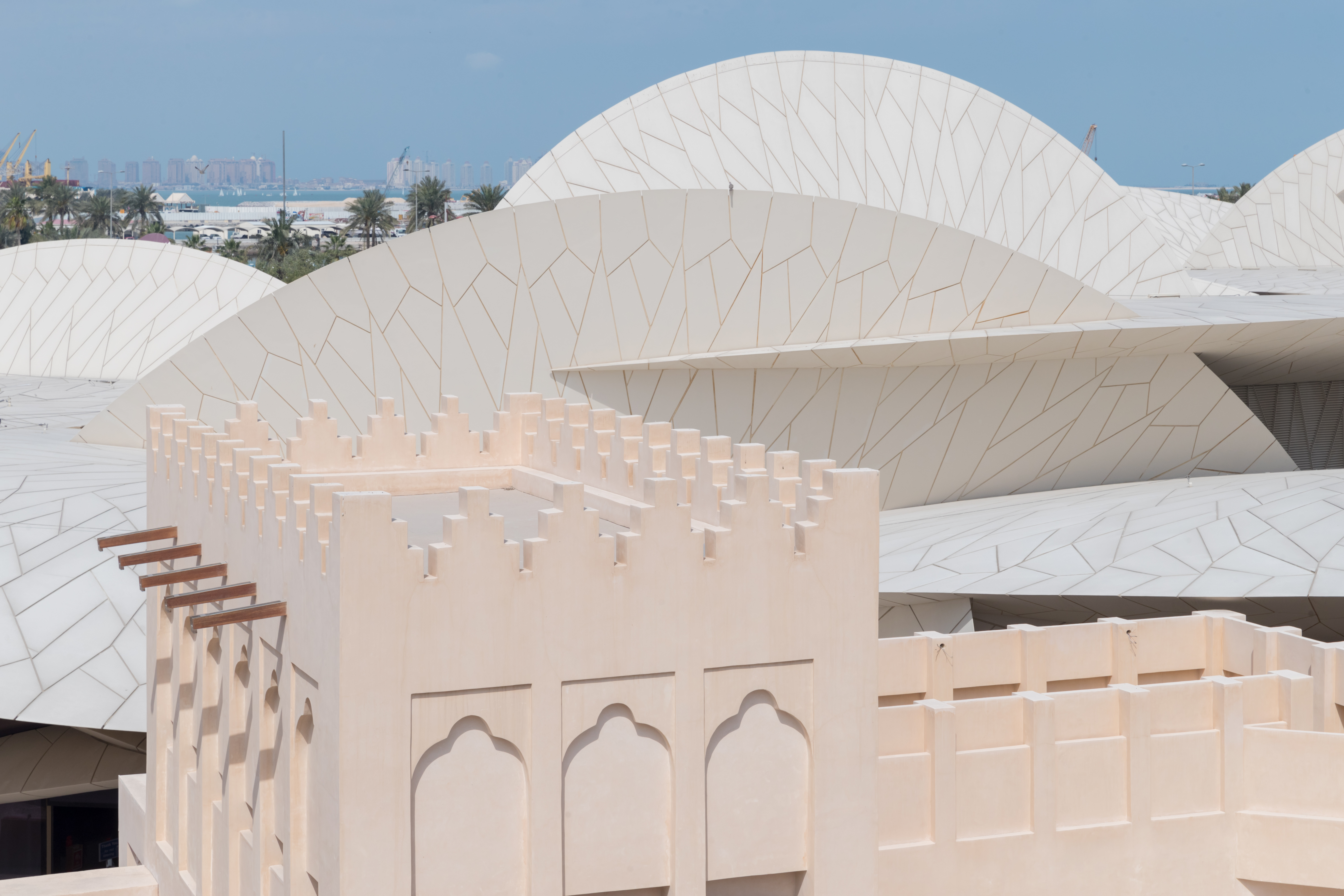
The museum sits among historical architecture of the region, such as the Palace of Sheikh Abdullah bin Jassim Al Thani.
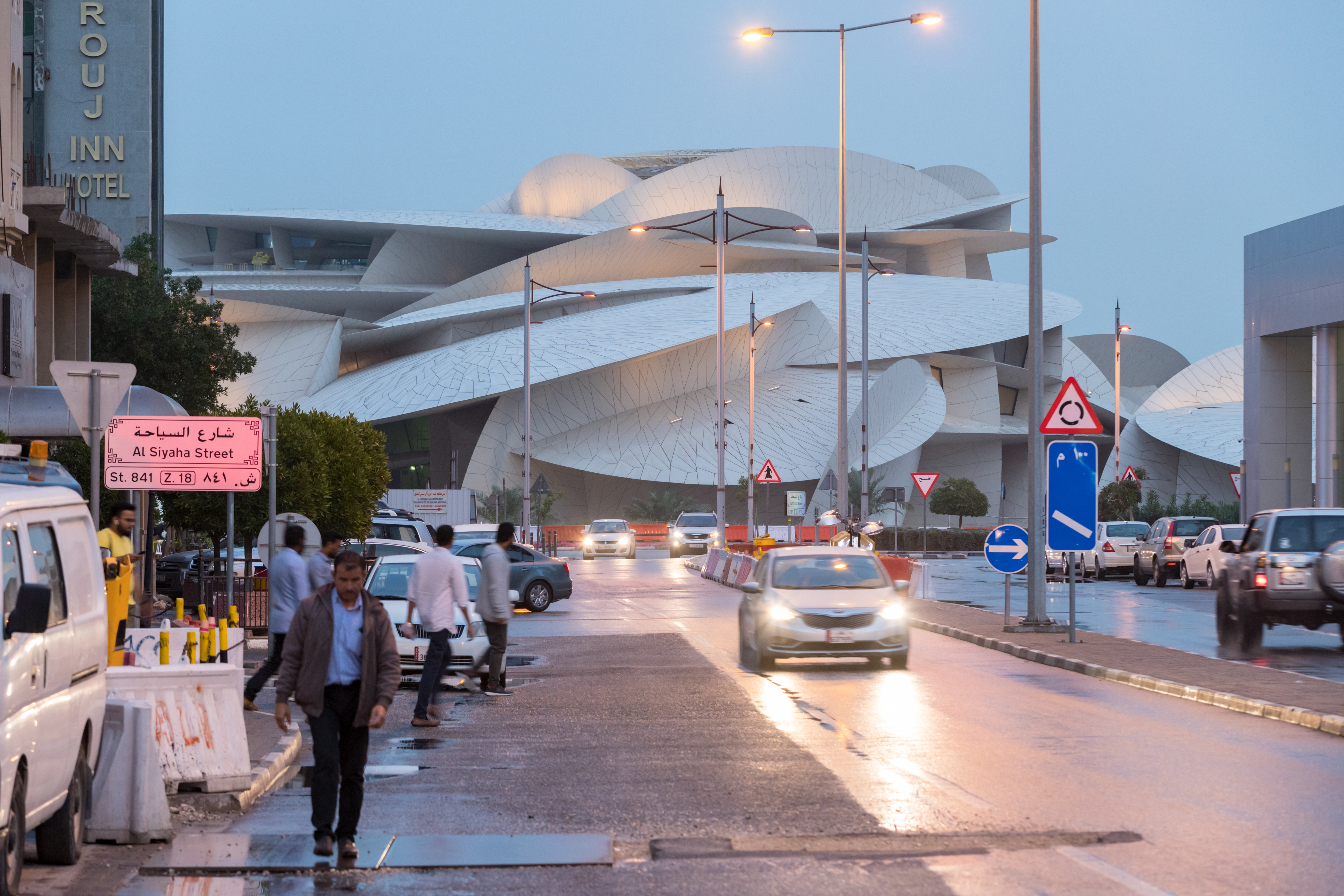
The striking composition and its some-539 discs stands out in the Doha streetscape. Photography: Iwan Baan
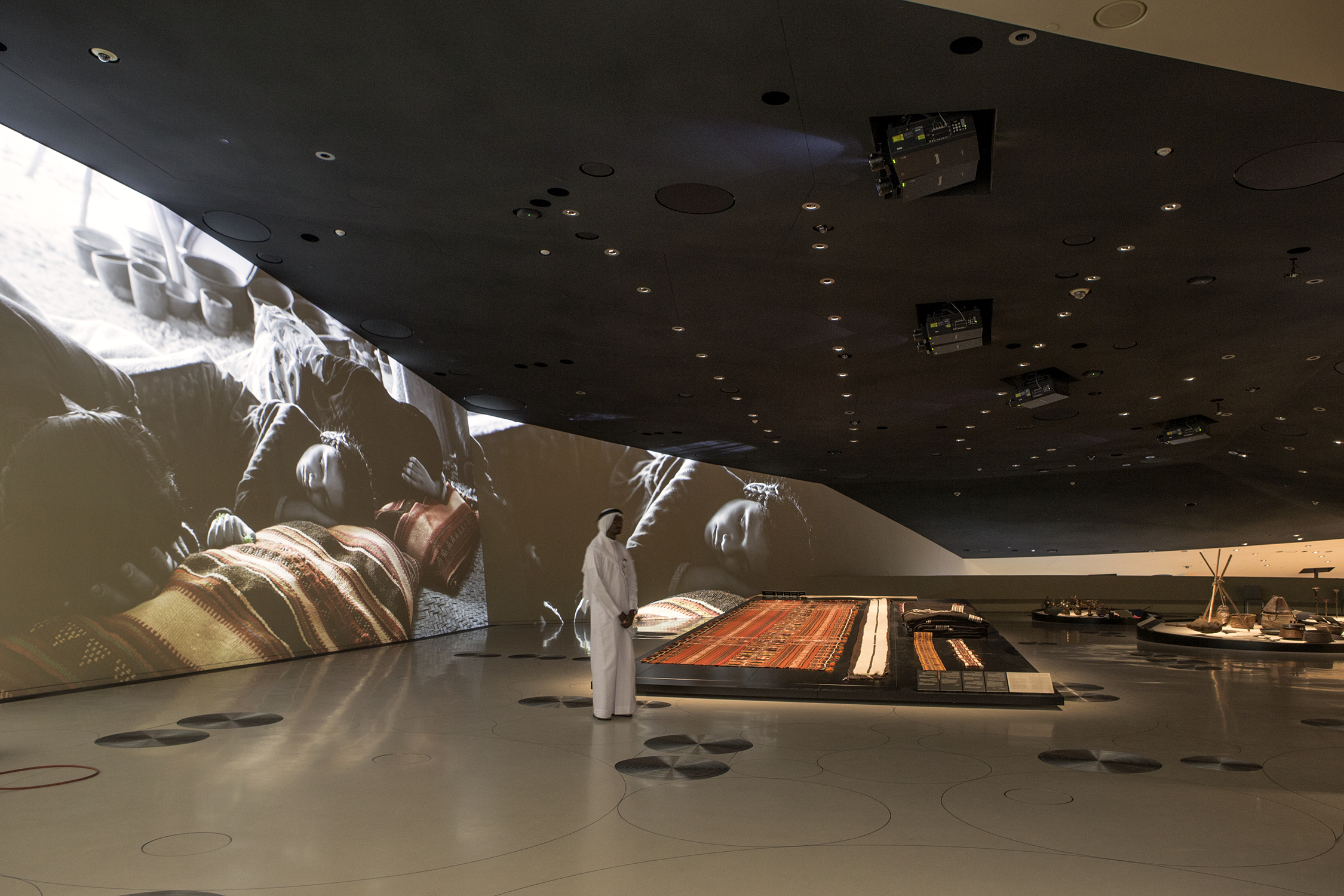
The artefacts on display include from tools and runes from prehistory, to extraction machinery from Qatar’s recent arrival as a world leader in liquid natural gas.
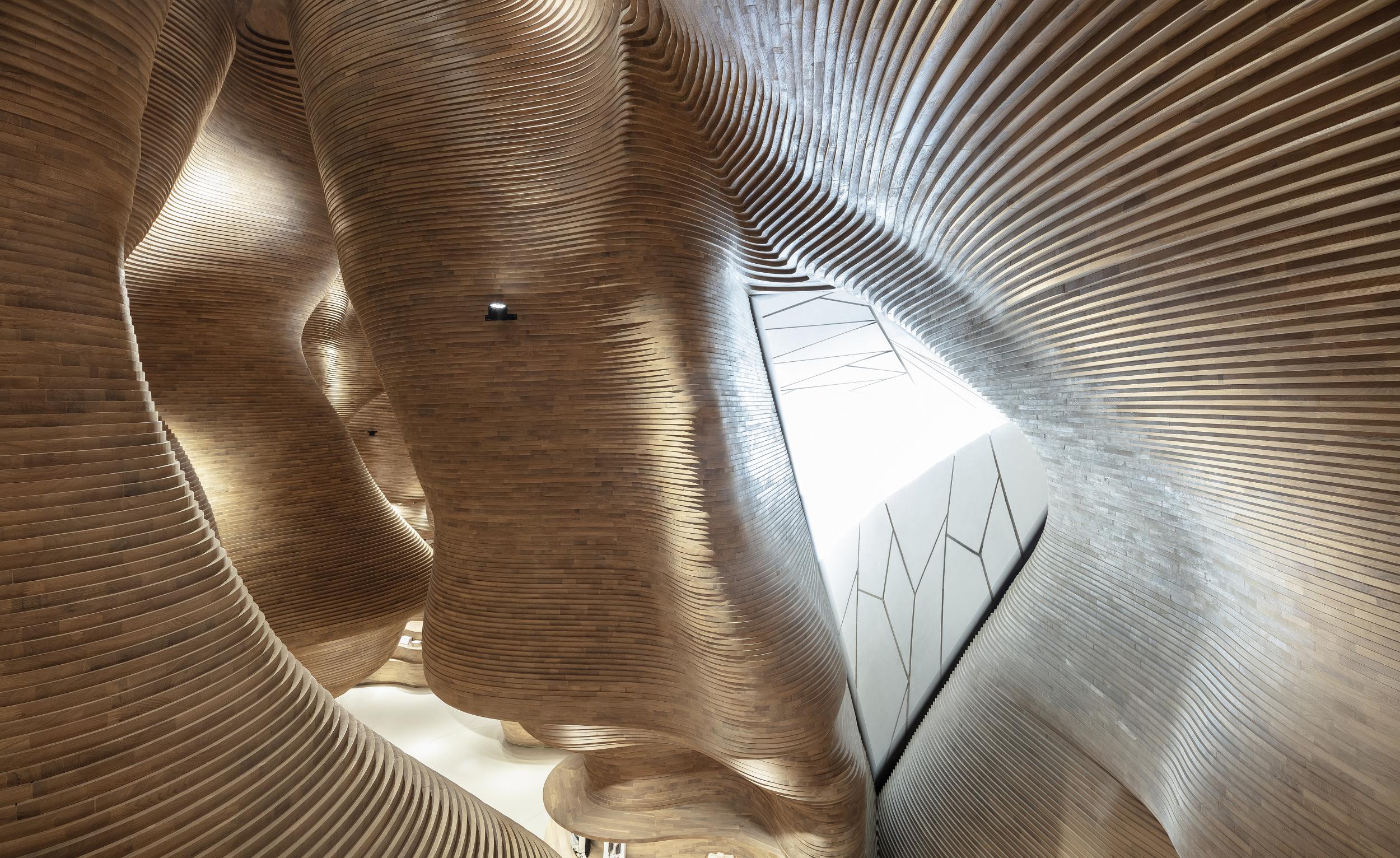
The ceiling of the gift shop, interior architecture by Koichi Takada Architects.
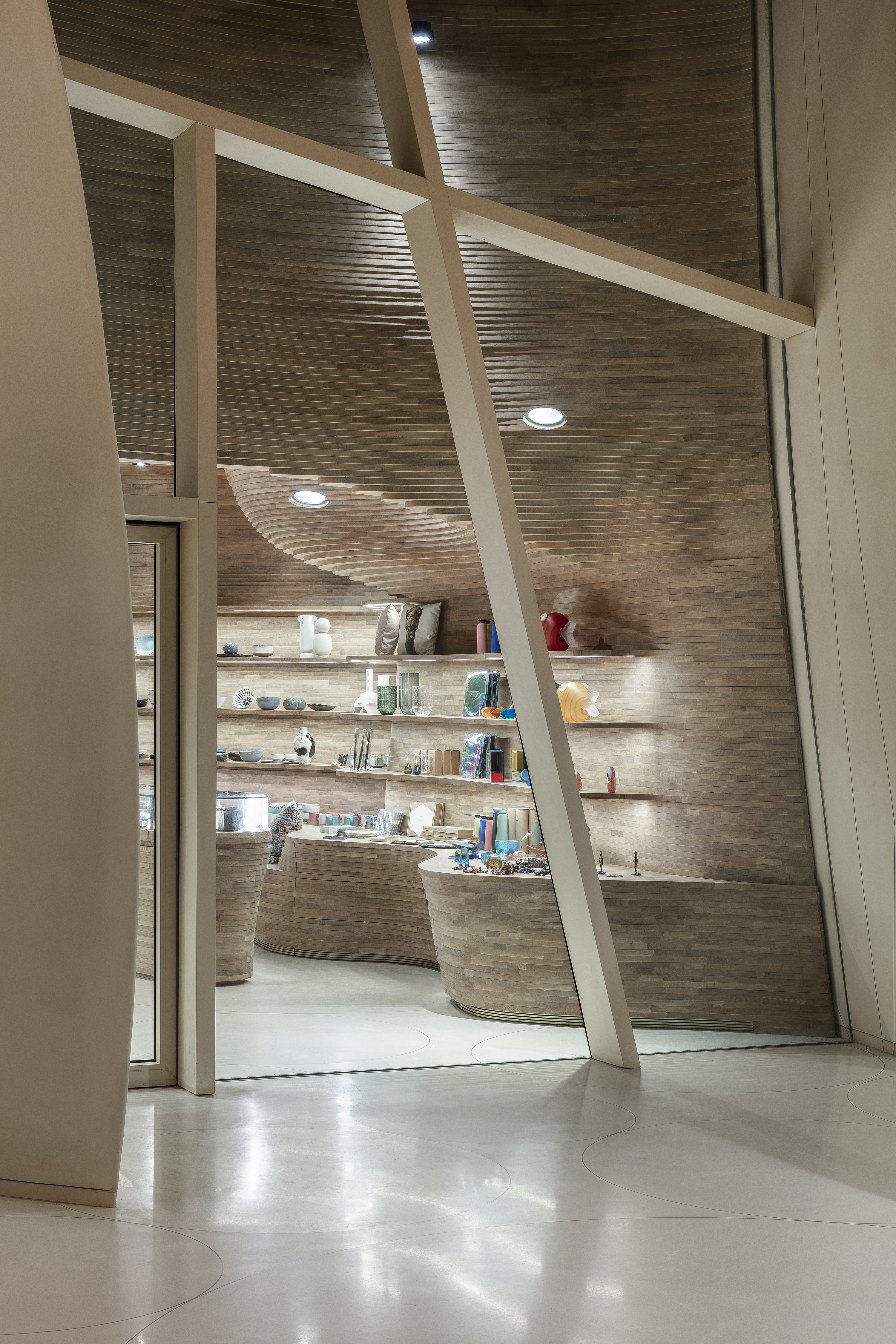
Entrance to the gift shop, carved out of the architecture.
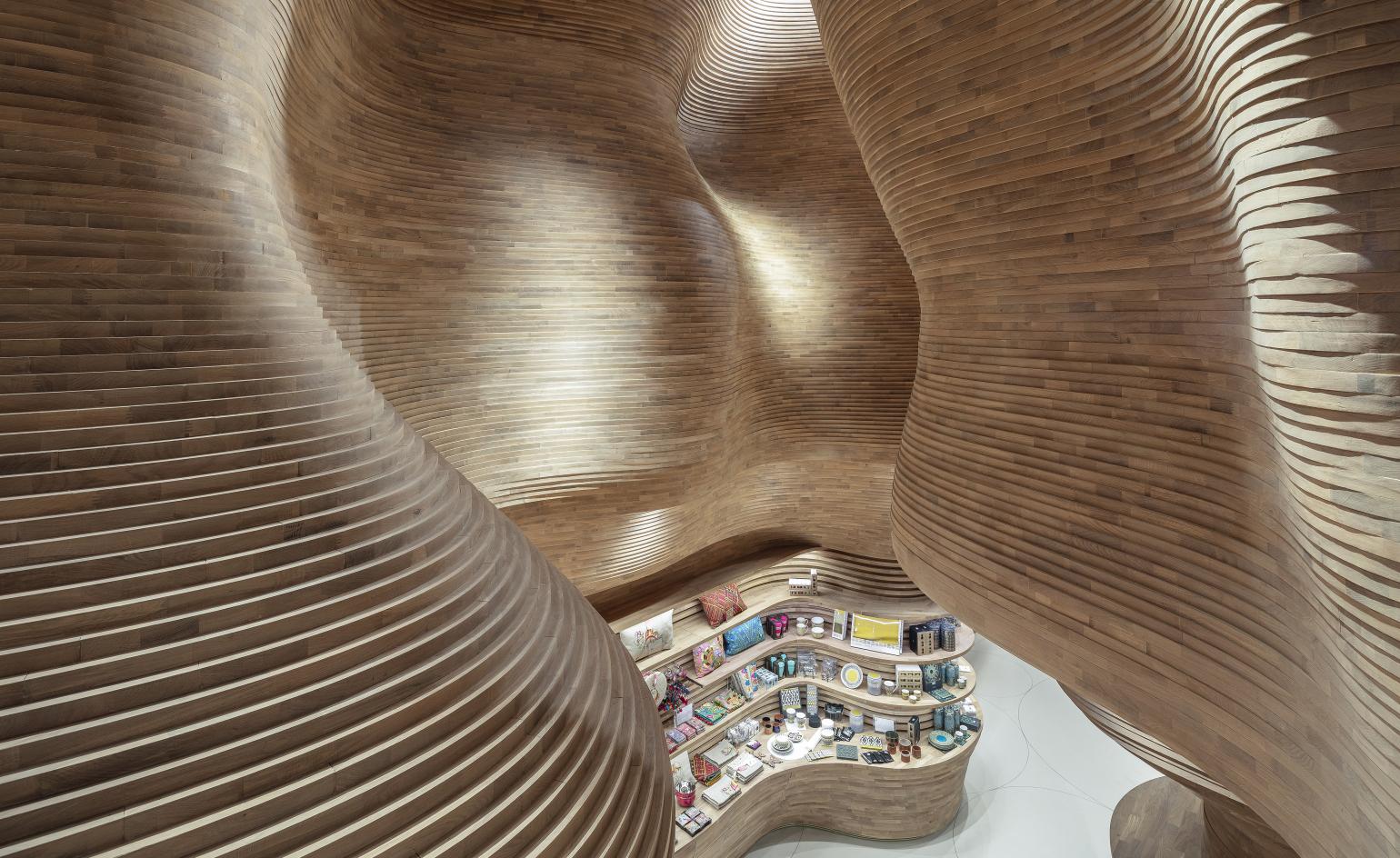
View down to the gift shop
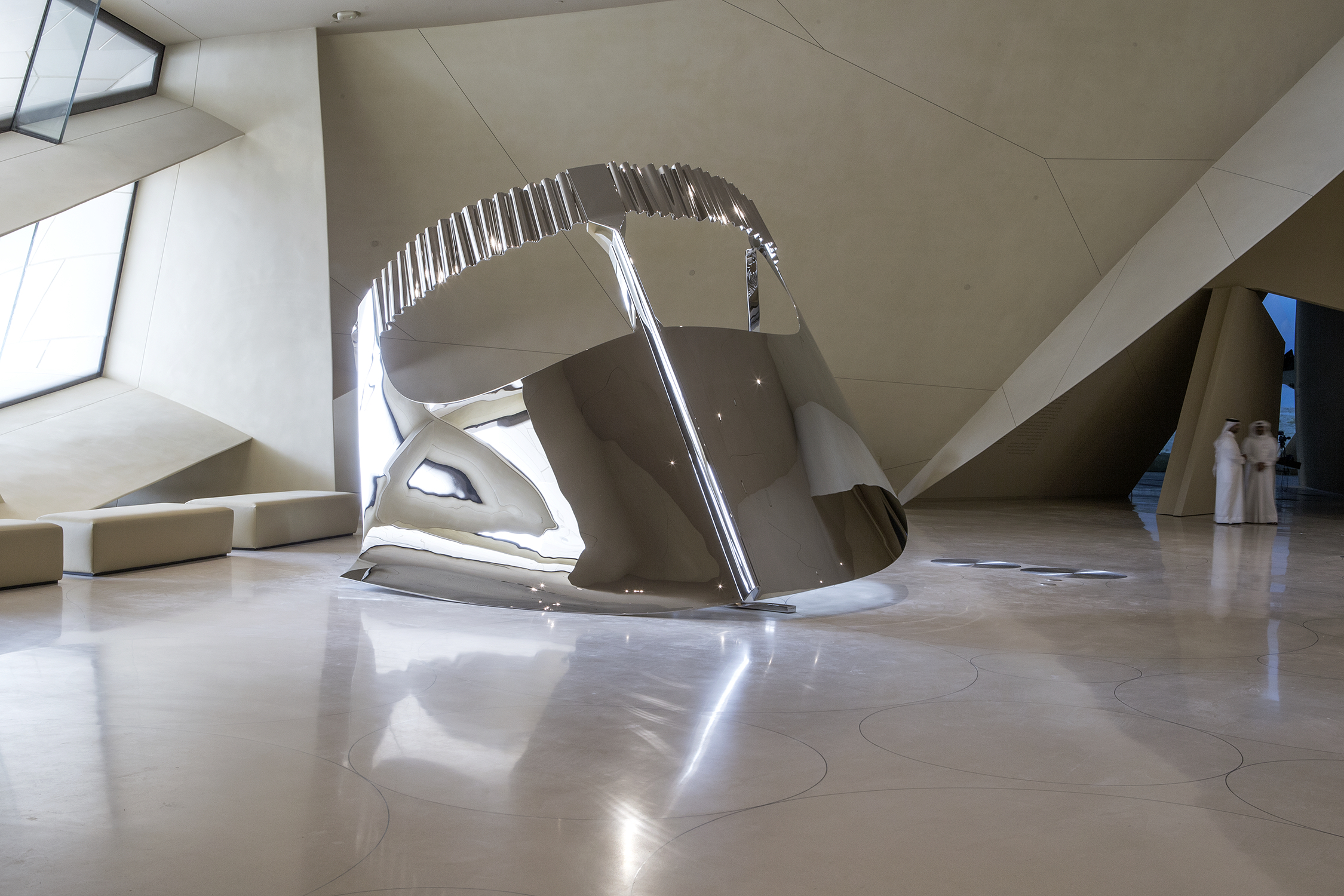
Windows are carefully placed to protect the interiors from the region’s intense heat.
INFORMATION
For more information visit the The Ateliers Jean Nouvel website
Based in London, Ellen Himelfarb travels widely for her reports on architecture and design. Her words appear in The Times, The Telegraph, The World of Interiors, and The Globe and Mail in her native Canada. She has worked with Wallpaper* since 2006.
-
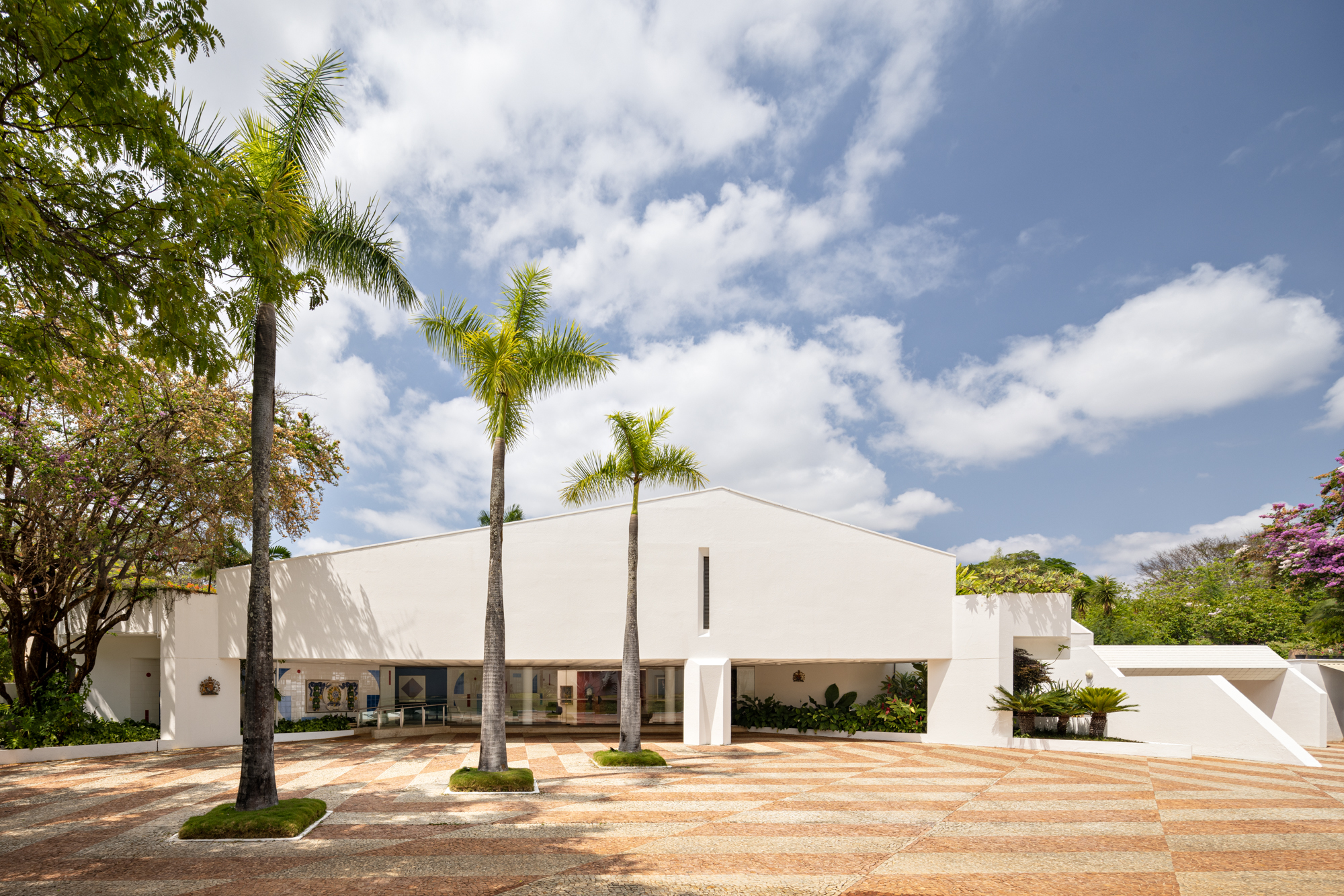 A postmodernist home reborn: we tour the British embassy in Brazil
A postmodernist home reborn: we tour the British embassy in BrazilWe tour the British Embassy in Brazil after its thorough renovation by Hersen Mendes Arquitetura, which breathes new life into a postmodernist structure within the country's famous modernist capital
-
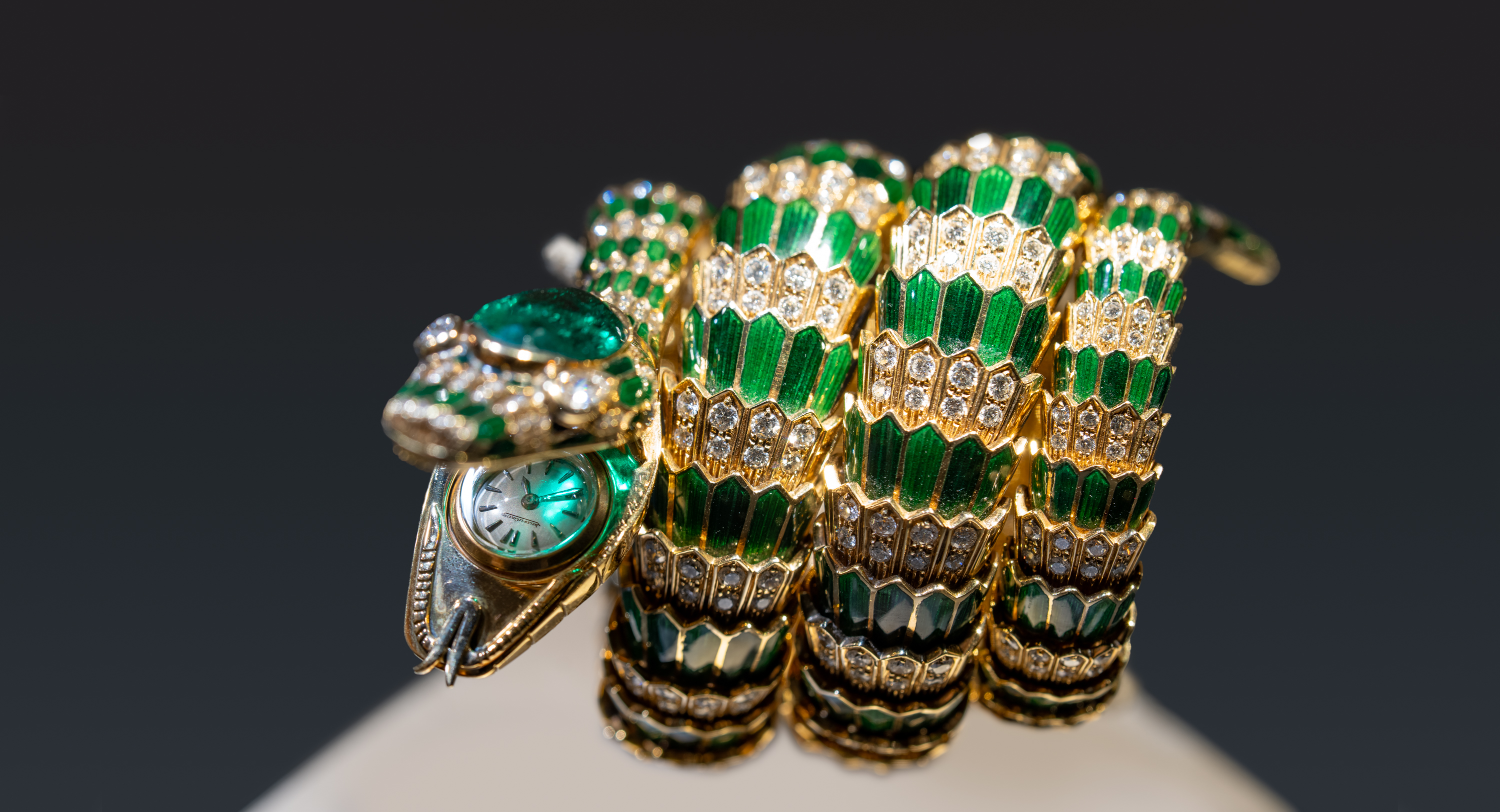 Bvlgari's celebration of the Serpenti snakes its way from Tokyo to Shanghai, Seoul and Mumbai
Bvlgari's celebration of the Serpenti snakes its way from Tokyo to Shanghai, Seoul and MumbaiRoman high jeweller Bvlgari marks the Year of the Snake with the sensual Serpenti Infinito exhibition
-
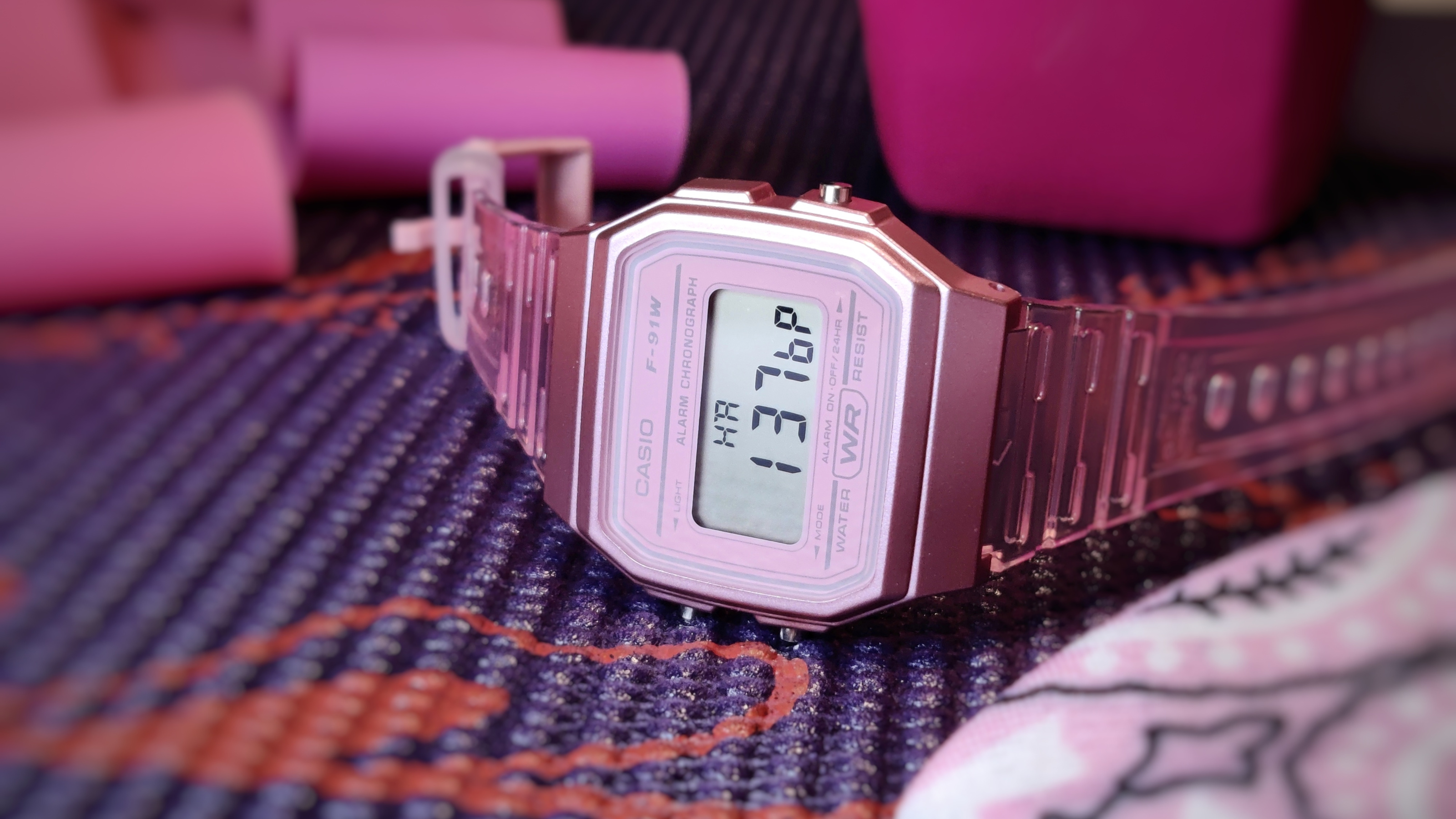 Fancy transforming your ageing Casio into a smartwatch? Ollee has the answer
Fancy transforming your ageing Casio into a smartwatch? Ollee has the answerThe Ollee Watch transforms Casio's cult digital watch into a retro-tinged smart device
-
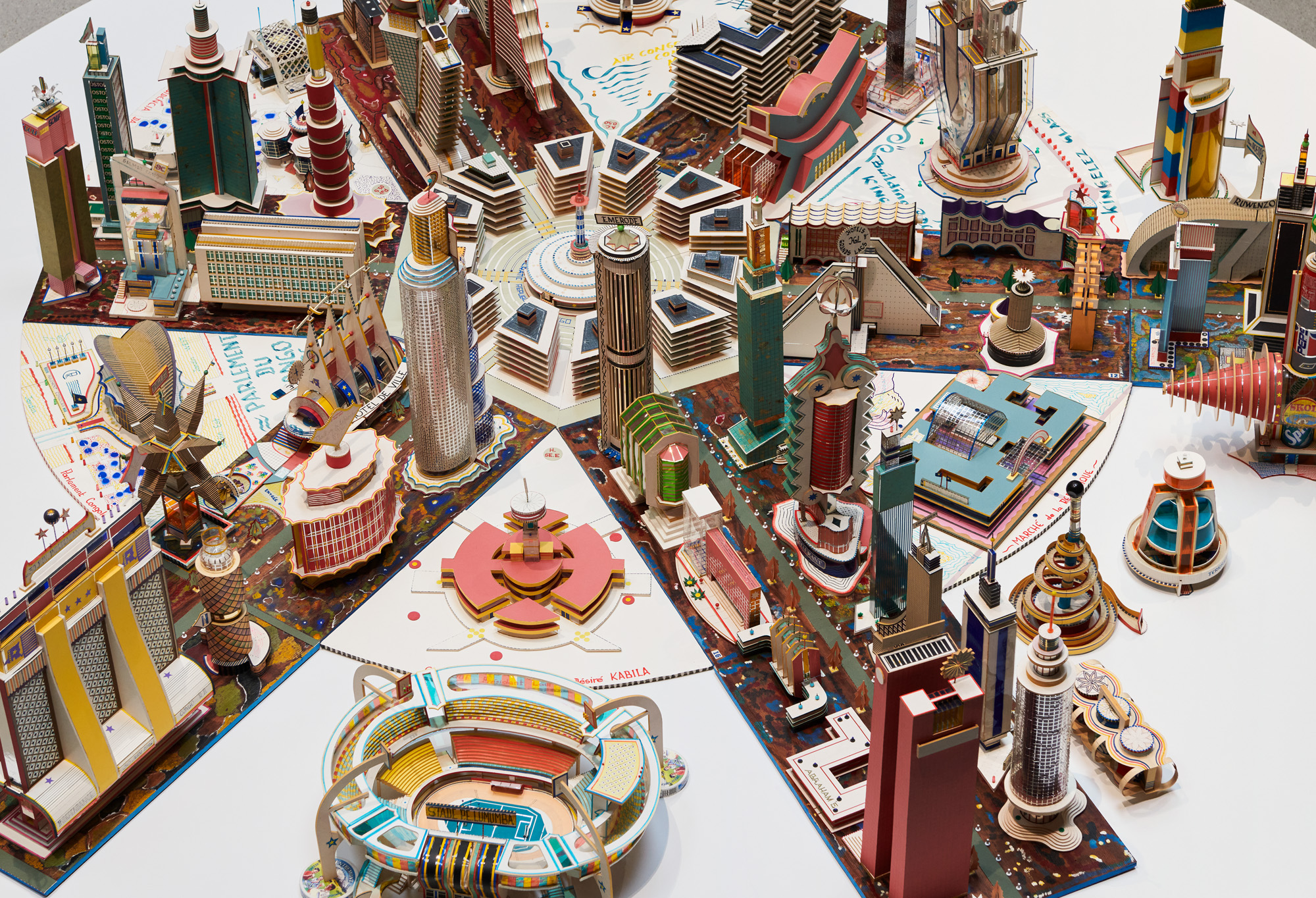 ‘You have to be courageous and experimental’: inside Fondation Cartier’s new home
‘You have to be courageous and experimental’: inside Fondation Cartier’s new homeFondation Cartier pour l'art contemporain in Paris invites us into its new home, a movable feast expertly designed by Jean Nouvel
-
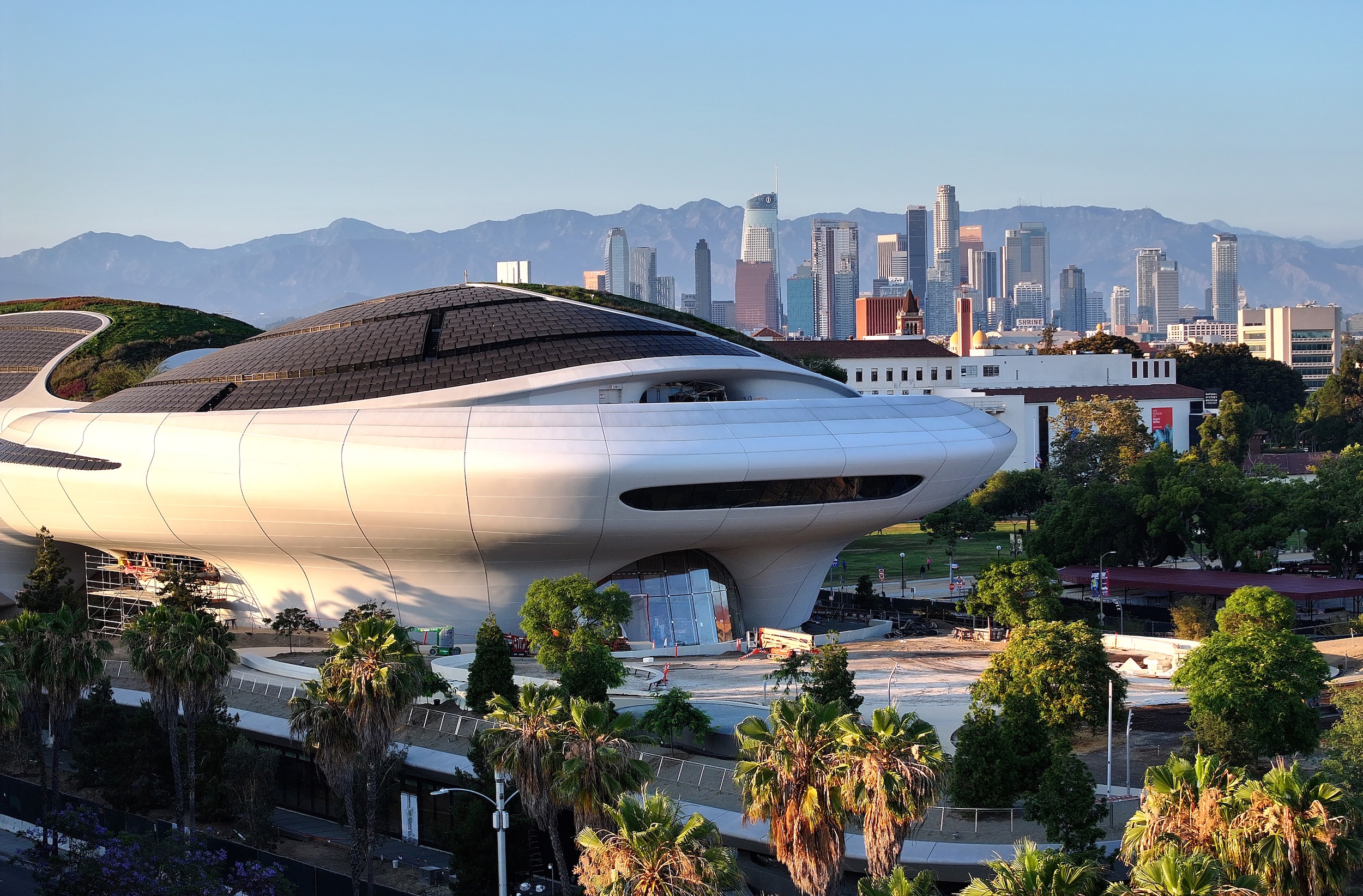 George Lucas’ otherworldly Los Angeles museum is almost finished. Here’s a sneak peek
George Lucas’ otherworldly Los Angeles museum is almost finished. Here’s a sneak peekArchitect Ma Yansong walks us through the design of the $1 billion Lucas Museum of Narrative Art, set to open early next year
-
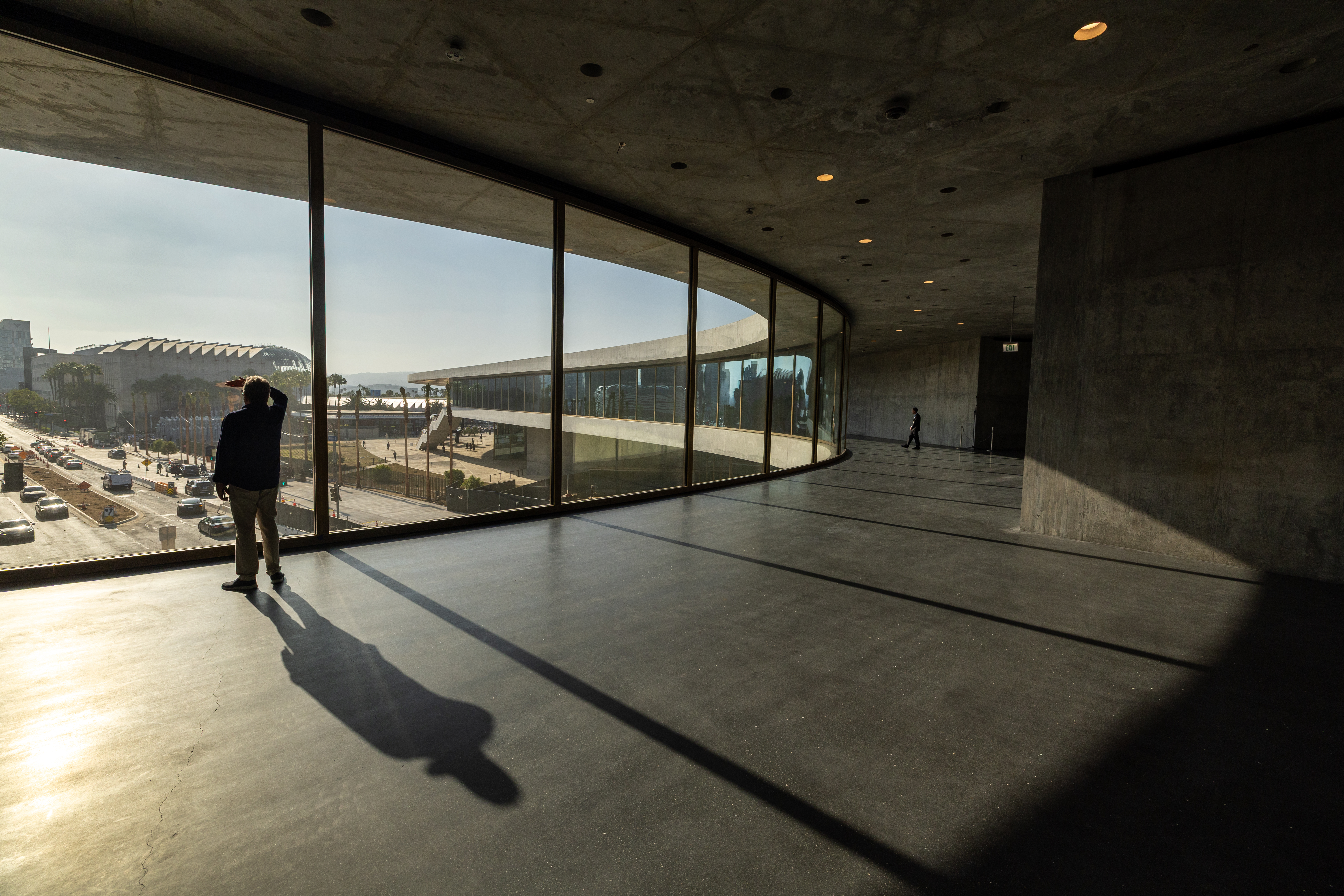 The great American museum boom
The great American museum boomNine of the world’s top ten most expensive, recently announced cultural projects are in the US. What is driving this investment, and is this statistic sustainable?
-
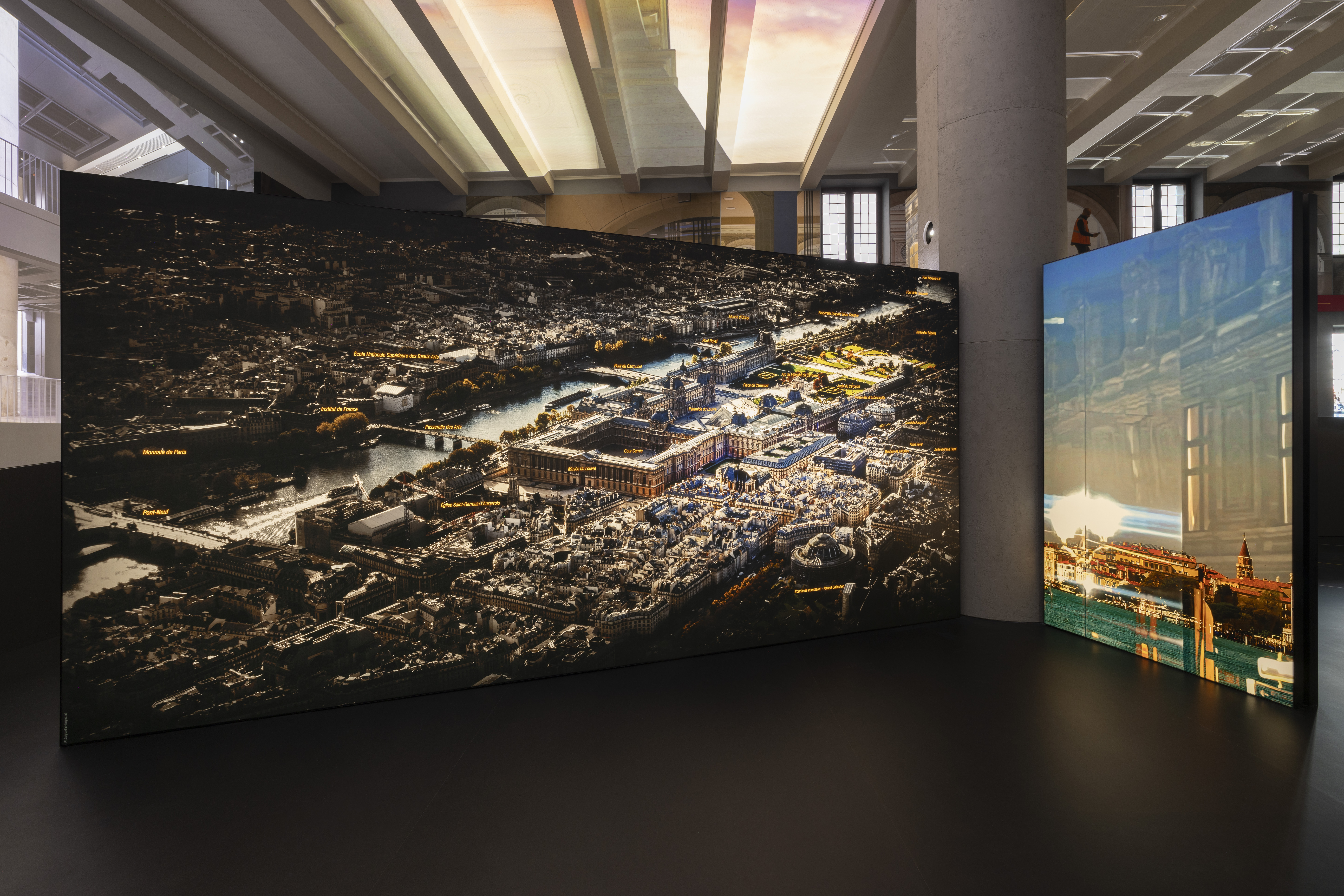 A Venice sneak peek into the new Fondation Cartier pour l’art contemporain by Jean Nouvel
A Venice sneak peek into the new Fondation Cartier pour l’art contemporain by Jean NouvelA new home for Fondation Cartier pour l’art contemporain by Jean Nouvel will open later this year in Paris; in the meantime, the Venice Architecture Biennale 2025 offered the perfect platform for a sneak preview of what's to come
-
 The Yale Center for British Art, Louis Kahn’s final project, glows anew after a two-year closure
The Yale Center for British Art, Louis Kahn’s final project, glows anew after a two-year closureAfter years of restoration, a modernist jewel and a treasure trove of British artwork can be seen in a whole new light
-
 You’ll soon be able to get a sneak peek inside Peter Zumthor’s LACMA expansion
You’ll soon be able to get a sneak peek inside Peter Zumthor’s LACMA expansionBut you’ll still have to wait another year for the grand opening
-
 NYC's The New Museum announces an OMA-designed extension
NYC's The New Museum announces an OMA-designed extensionOMA partners including Rem Koolhas and Shohei Shigematsu are designing a new building for Manhattan's only dedicated contemporary art museum
-
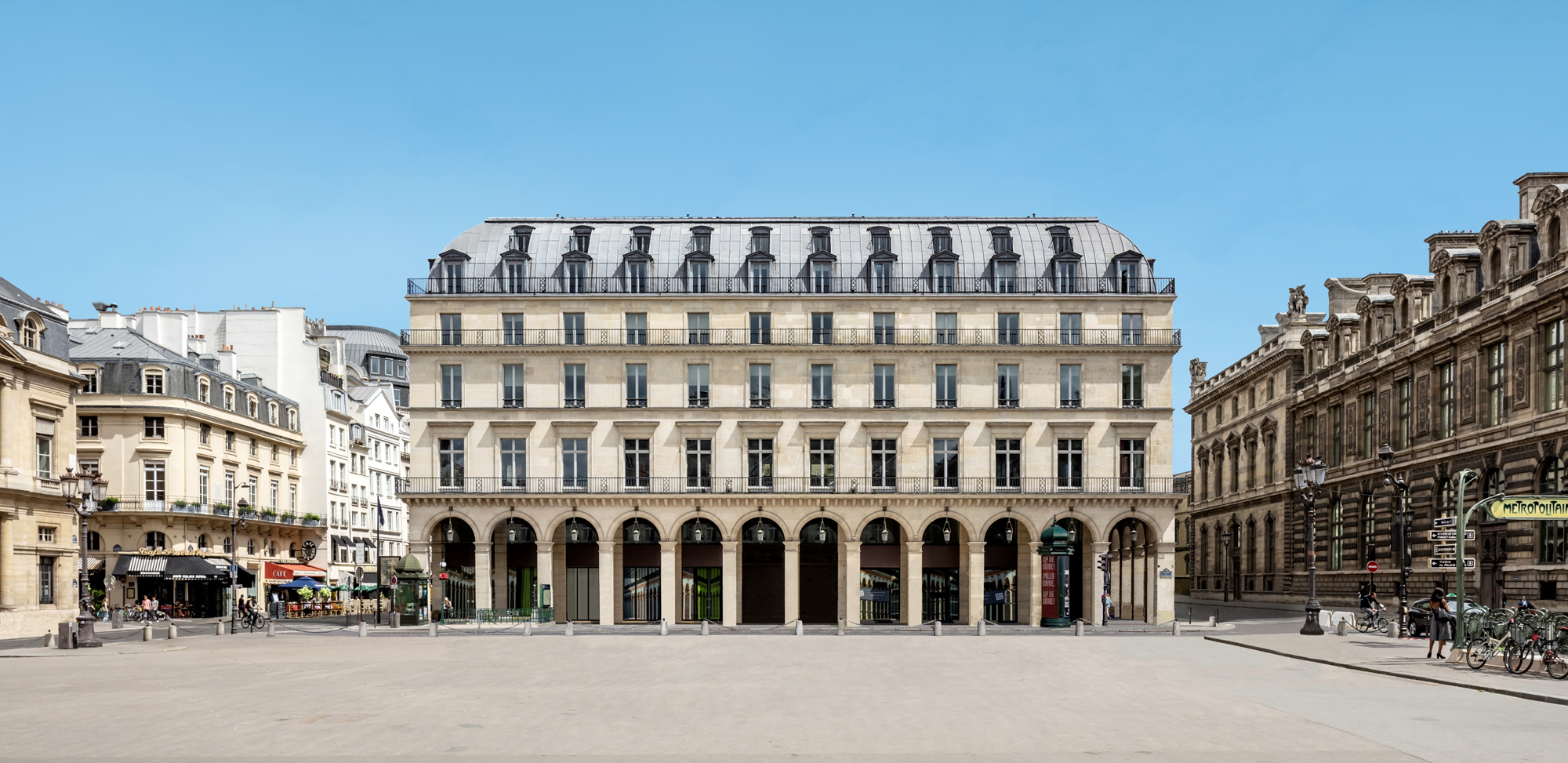 Fondation Cartier pour l’art contemporain unveils plans for new Jean Nouvel building
Fondation Cartier pour l’art contemporain unveils plans for new Jean Nouvel buildingFondation Cartier pour l’art contemporain has plans for a new building in Paris, working with architect Jean Nouvel